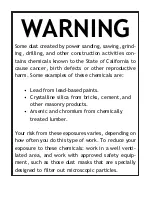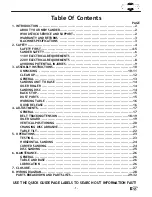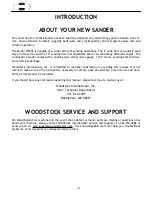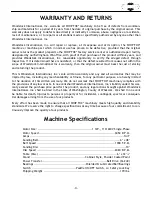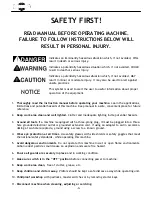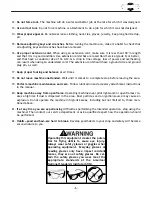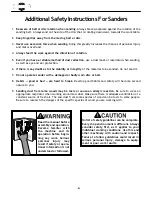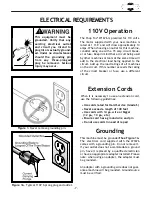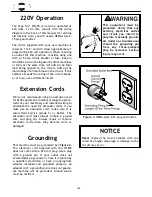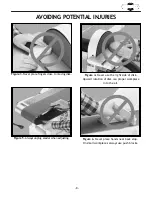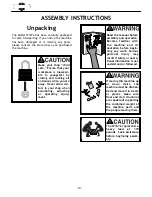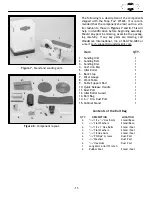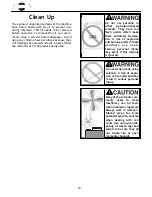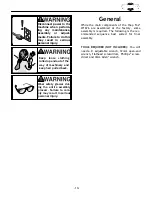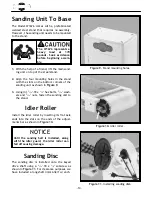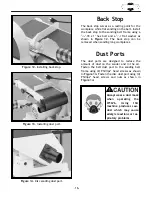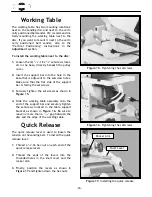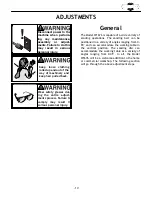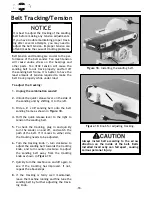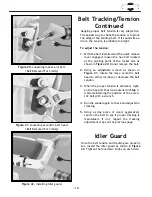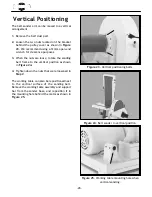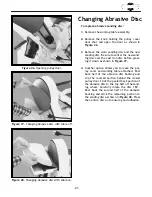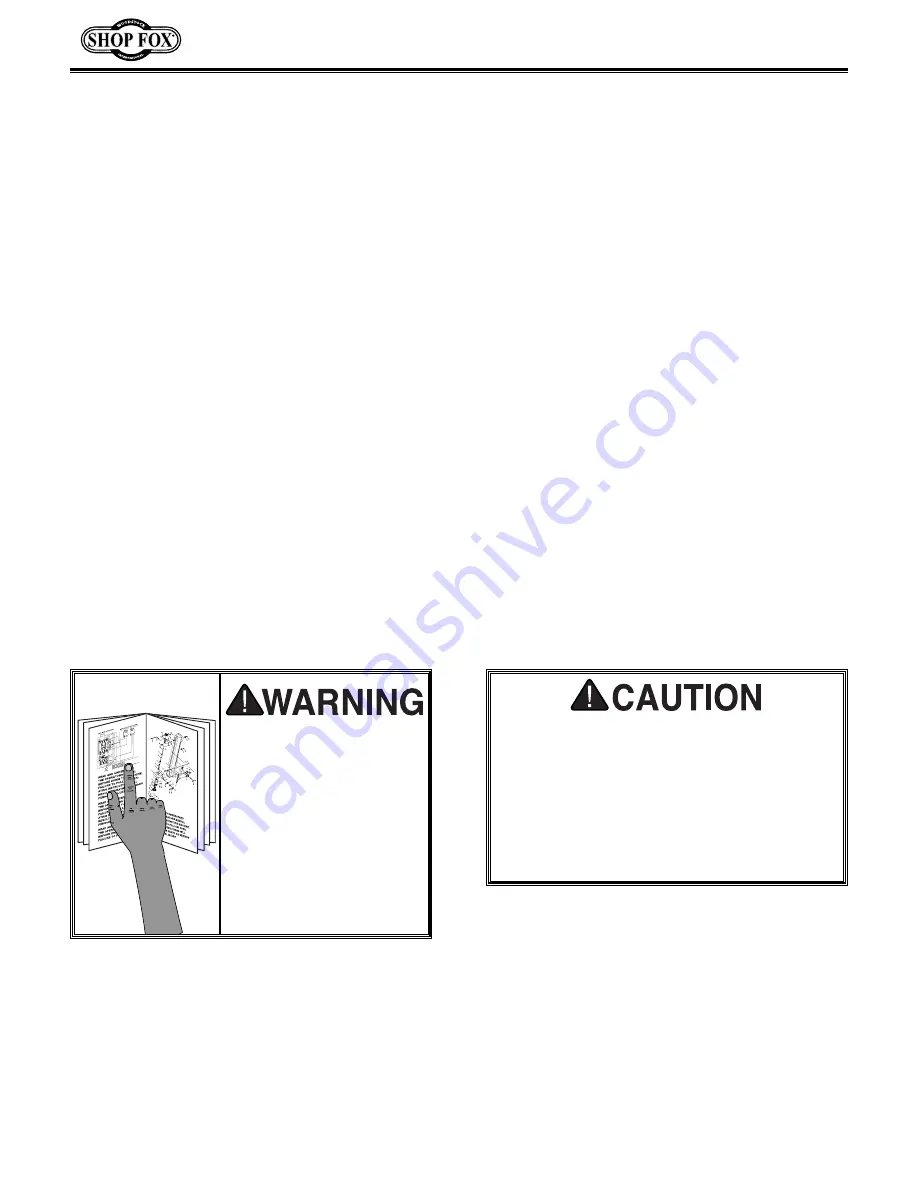
-6-
Additional Safety Instructions For Sanders
1.
Be aware of belt or disc rotation when sanding.
Always brace workpiece against the rotation of the
sanding belt. Always sand on the side of the disc that is rotating downward, towards the work table.
2.
Keep fingertips away from the moving belt or disc.
3.
Never use excessive force when sanding.
Doing this greatly increases the chances of personal injury
and motor overload.
4.
Always feed the work against the direction of rotation.
5.
Even if you have a reliable method of dust collection
, use a dust mask or respirator when sanding,
as well as eye and ear protection.
6.
If there is any doubt as to the stability or integrity
of the material to be sanded, do not sand it.
7.
Do not operate sander with a damaged or badly worn disc or belt.
8.
Habits — good or bad — are hard to break.
Develop good habits and safety will become second
nature to you.
9.
Sanding dust from some woods may be toxic or cause an allergic reaction.
Be sure to wear an
appropriate respirator when working around saw dust. Make sure there is adequate ventilation or a
constant source of fresh air. The saw dust from some species of wood can be toxic to some people.
Be sure to research the dangers of the specific species of wood you are working with.
Read the manual before
assembly and operation.
Become familiar with
the machine and its
operation before begin-
ning any work. Serious
personal injury may
result if safety or opera-
tional information is not
understood or followed.
No list of safety guidelines can be complete.
Every shop environment is different. Always
consider safety first, as it applies to your
individual working conditions. Use this and
other machinery with caution and respect.
Failure to follow guidelines could result in
serious personal injury, damage to equip-
ment or poor work results.


